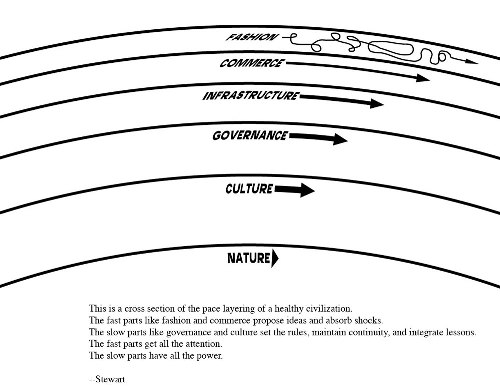
This is a cross section of the pace layering of a healthy civilization.This is much better said but not far removed from an earlier conception I had of how humans arrange themselves into social structures. Below is a chart I made several years ago (prior to coming back to school), showing how I viewed the interaction between human nature, informal institutions (such as culture, religion, tradition, etc.), political systems, legal systems, and a functioning market economy. Each "layer" is dependent upon the healthy functioning of the "layer" immediately beneath it:
The fast parts like fashion and commerce propose ideas and absorb shocks.
The slow parts like governance and cluture set the rules, maintain continuity, and integrate lessons.
The fast parts get all the attention.
The slow parts have all the power.

I am convinced that in order to truly understand economic development, it is important to understand the role of culture, religion, politics, and law plays in helping to establish and sustain institutions that support markets. These are the areas I have been focusing my studies on here at GMU.
Getting back to the Edge's question, some of my other favorite include responses question are by Jonathan Haidt, Alison Gopnik, Matt Ridley, George Chruch, and Mihaly Csikszentmihalyi. Follow the link above for many more.
Last year, Edge asked "What are you optimistic about? Why?" Read my response here.
(HT Arnold Kling)
No comments:
Post a Comment